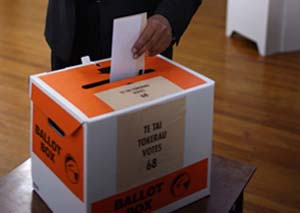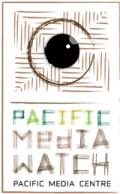
AUCKLAND (Massey University / Pacific Media Watch): New research concludes that four of New Zealand's top newspapers were biased in their coverage of the last general election.
The research by Massey University associate professor Claire Robinson finds that the New Zealand Herald, Herald on Sunday, Dominion Post and Sunday Star-Times all exhibited substantial bias in their selection and use of images during the 2011 election campaign, most of it in favour of Prime Minister John Key.
“Labour and Phil Goff have real grounds to feel they were unfairly treated in print during the last election campaign,” Dr Robinson says.
Dr Robinson assessed every image of John Key and Phil Goff published during the election campaign in the four big papers. Key featured 138 times while Mr Goff featured 80 times. Key also dominated the column centimetres, at an almost two to one ratio.
Both Key and Goff received much more positive and neutral coverage than negative coverage from all four papers, but the Herald and Herald on Sunday were generally more positive in their treatment of Key, while the Dominion Post and Sunday Star-Times were kinder to Goff.
“My research suggests there could be grounds for a complaint to the New Zealand Press Council that the newspapers breached the principle of fairness and balance in their campaign coverage.
“Traditionally, newspaper editors have judged whether their coverage is balanced based on the number, tone and position of words. But we live in an image-saturated world. In reality, readers absorb headlines, images, graphics and captions, and rarely study every column inch. News media render the world visually as well as verbally. It is time they paid serious attention to the ethics of which images they publish, when and how," she says.
“For politicians, image selection and positioning is likely to become even more important with newspapers such as the new-look compact-format Herald becoming more visually-driven.”
Dr Robinson’s analysis also found a dramatic shift in image selection at the height of the teapot tape saga.
“When the news media itself becomes an actor in a political controversy, things get ugly. Picture editors dusted off their most unflattering shots of John Key.
"In the final days of the campaign none of the papers published a negative image of Phil Goff compared with the early (pre-teapot) period where more than one in three images of Goff were negative.”
This work is licensed under a Creative Commons Attribution-NonCommercial 3.0 New Zealand Licence.




